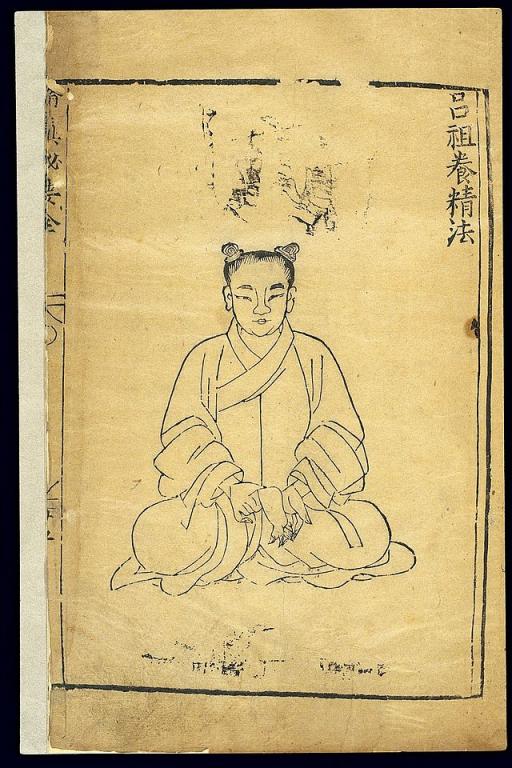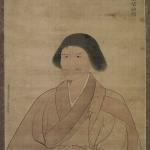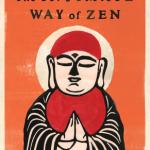
Xiuzhen Miyao
16th century
Wikicommon
“One breath taken completely; one poem, fully written, fully read – in such a moment, anything can happen.”
Jane Hirshfield[1]
In my particular corner of the Zen world when one is giving basic meditation instruction, once the body is addressed, we turn to what to do with the mind. Most commonly breath counting is considered the first step. Counting the breath allows one to develop a little concentration. This helps the beginner to keep focus and when, as it does, the mind wanders breath counting allows a quick way back to the moment at hand.
The fact that we’re going to breathe anyway gives us something to touch, to be aware of with minimal distraction. And so that attaching numbers to the breath as a skillful means. But there are other aspects to the breath and its possible connection to the larger meditative project that are worth noting.
It also anchors us at that place where body and mind most clearly connect. As such it is potentially a very important thing. In the Rinzai school this is much more emphasized. That noted, whatever school of Zen one finds most resonance with, this is worth knowing a bit deeper than as a useful way to keep us returning to the moment.
I recall the first time I heard a Rinzai teacher say that “shikantaza is the extended outbreath.” shikantaza is generally understood to translate as “just sitting.” It’s considered a state, there are quibbles about using a word like “state” as the place is without conceptual litter. However we choose to point to it, shikantaza is arrived at after a period of time breath counting, but also, after one has stopped counting.
Shikantaza as a term is used mostly in the Soto style of Zen. It being the Japanese Soto founder Eihei Dogen’s adaptation of the Chinese term zhǐguǎn dǎzuò. So, it could also be heard as a tweak from a Rinzai observer of Soto practice. Suggesting at the very least neglecting something important. But in fact, there’s a whole approach to Zen meditation included in the Rinzai style of practice. One that is important to look at.
Japanese Rinzai practice is grounded in a breath discipline taught by the Eighteen century reformer of that school, Hakuin Ekaku. He taught Zen meditation’s foundation with susokkan, which is usually translated as “counting the breath meditation.”
To understand this practice, it is important to have a sense of two technical terms, ki and tanden. Ki is the Japanese rendition of the Chinese term Qi. Qi is a central concept in East Asian thinking with applications in religion, medicine, and martial arts. Often ki is seen as the life-source, or life-energy. This energy flows through all things including our bodies. Tanden is the Japanese for the Chinese word dantian and is usually translated as “center.” It is also sometimes called the hara. The use can be complicated, but for here the tanden or hara is the imaginal center of a human being. It is believed to be located about three fingers beneath the navel in the middle of the body. We can think of it as a person’s center of gravity.
In modern physics a center of gravity is an imaginary point in a body where the weight of that body centers. Perhaps imaginary, it has actual real world consequences. Similarly with the human being we have imaginal centers of gravity. Dancers and actors can move the sense of centeredness throughout the body with consequences how they feel in their part, their sense of balance, and how others see them.
There definitely are consequences in our physical lives depending on where we place our consciousness, where we find or place our center of gravity. Whatever one’s beliefs about Chinese metaphysical and medical theories, there are immediate psychophysical reactions to a person’s imagining one’s life energy and “placing” it in the tanden or hara. And Rinzai Zen uses this reality.
After finding a balanced posture you simply feel the cycle of your own breath, inhalation and exhalation as a whole. Being aware of the breath anchored at the tanden where it begins and ends, where it starts and to where it returns.
The Rinzai master Shodo Harada speaks of six stages of sosokkhan. Which is a sort of map with instructions. In this case the first two parts are physical practices while the subsequent four describe your interior experiences. These help you to know whether you’re on track or not.
The first stage is simply to count the breath. Usually, a full cycle inhalation and exhalation count as “one.” Then the next full cycle as “two.” Three. Four. And so on to ten. In this it’s not much different than the Soto style, except there’s the clear instruction to put the focus of consciousness at the tanden, at the hara.
The second stage is simply being aware of your breathing, in and out. It all becomes a harmonic whole. This, too, is not all that different from the Soto style. Emphasizing and finding the oneness of the experience. Or, really, beginning to notice the oneness of the experience. This unfolds over time. By breathing from the tanden it’s easier to come to the experience of that oneness of breath.
The third stage is stopping. Not stopping the breathing itself. But where your mind stops discriminating about what is this and what is other. Here you are simply aware of the unity of your breath and your body. Not exactly one. But not two. Just letting the breath roll on as part of a greater whole that is the body mind. Experiencing it.
From here at the fourth stage, you move to being aware of how this unity informing the multiplicity of things extends to everywhere. At this point the difference in the rising and falling of the breath is not really experienced within the body nor outside of the body. With an attenuated center sometimes noticed sometimes not. Now the center is no longer simply an “I.” But rather, it’s as if the universe itself is breathing. The center is just noticing.
Next at the fifth stage, the focus turns inward again, but from this much broader perspective. Here this broad field of possibility is like a light that can be turned inward. Here we can dig into that multiplicity of things as one thing. We can experience our individual lives more fully, as rising and falling. Our thoughts, our history, our feelings, rising and falling within something vastly larger.
Here the mind body becomes a field of possibility. Felt. Experienced. Without judgment or anxiety.
And finally at the sixth stage all sense of self and other fall away. Feeling. Experiencing. Without self, without other. Here we understand the term “just this” as vastly broader and deeper than what concerns our egos.
But there’s a beginning to this. Sosokkhan points to an arc of possibility. So paying a bit more attention to the awareness of our breath and our breathing at the beginning can pay off in some very interesting ways. And with that of ki and tanden. It doesn’t matter if we believe in Chinese models of the universe. Just let your imagination and your breath do their work.
Focus your attention at your center of gravity placed, felt, found, at the tanden. Yours exhalation should be long and steady. At first when you feel the natural end of the exhalation it’s important to push a little farther, completely emptying the lungs. Soon this extended outbreath becomes much more natural.
Here, yes, the extended outbreath is zazen. Zen meditation.
That the first stage includes counting is important. Awakening just happens. It is like the fabled spirit that lands where it wills. But there are things we can do to invite the spirit. This counting focuses the mind and beings to train it to not be trapped by thoughts or feelings and to be more receptive to larger possibilities.
While counting to ten is the most common practice here, there are any number of possible variations. None of which is wrong.
Tips along the way include trying to avoid making the counting mechanical, slipping into automatic counting. I recall counting to ten once, and hitting thirty-two. To be clear, this robotic counting is not what we’re trying to do. The standard advice applies whenever we have lost our way. Notice that it has happened, and then return to one. No side trips. No blaming self or other.
Just notice and then promptly back to one. There at the tanden. Here at the hara.
Simply counting the breath as an anchor to concentration is an easier practice to begin. It’s harder to grow into this deeper and more focused breath practice outside of a controlled environment like a retreat. But it can done.
As with any spiritual practice the point is to continue, to bring your heart to the matter.
And then again.
And then again.
Mysteries await.
***
And for another Buddhist take on breathing as a spiritual discipline…
[1] Jane Hirshfield, Nine Gates: Entering the Mind of Poetry, New York, Harper Perennial, 1998, p. 41














